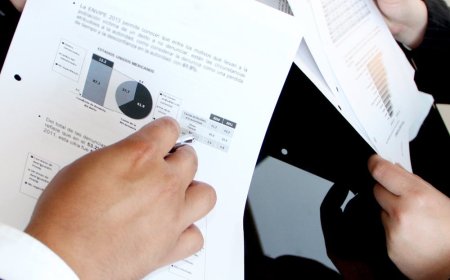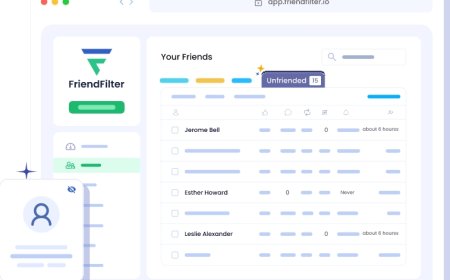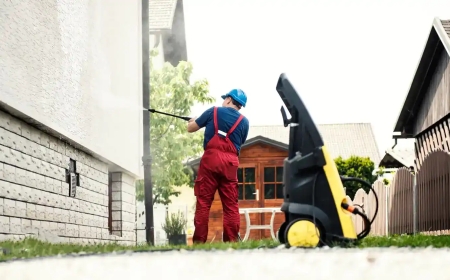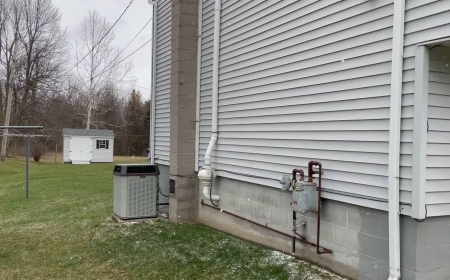5 Signs Your Child Needs a Paediatric Speech Pathologist (Australia Edition)
Discover the 5 key signs your child may need a paediatric speech pathologist in Australia, with expert tips on milestones, early intervention, and practical support.
Every parent watches in wonder as their childs language skills bloom. Sometimes, though, that flowering doesnt follow the timeline we expect. If you find yourself worried your child may be falling behind, youre not alone.
In Australia, about one in seven children enter school with a speech or language difficulty. Spotting the early signs can make all the difference. Below, well explore five clear red flags, share practical guidance, and explain how a qualified professional can help your youngster find their voice.
Sign 1: Missing Key Milestones in Early Speech
Children typically say a handful of single wordslike mama, dada or ballby 12 to 18 months. By two years, most toddlers can combine two words (more juice, bye-bye dog).
If at 18 months your child has fewer than 20 words, or by age two isnt using two?word phrases, this may indicate a delay. Studies show that around 13% of Australian two?year?olds are late talkers, lagging behind their peers at this critical stage.
Its tempting to assume kids just develop on their own timetable. While some do catch up, research consistently finds that early intervention greatly improves long?term outcomes. A brief assessment by a speech pathologist can clarify whether your child needs support, or if a wait and see approach is safe.

Sign 2: Speech Thats Hard to Understand
By age three, about 75% of a childs speech should be clear to strangers; by age four, nearly 100% should be intelligible.
If your child routinely mumbles, substitutes sounds, or is only understood by you and close family members, it could signal an articulation or phonological disorder. For example, wabbit for rabbit beyond the toddler years is common, but persistent errors may require attention.
Data from Australian prep classes show that nearly 15% of children start school with noticeable speech sound errors. Left unaddressed, these can affect literacy, social interaction, and self?esteem. A speech pathologist can pinpoint which sounds are causing trouble and design fun activities to practice correct pronunciation.
Sign 3: Limited Vocabulary Compared to Peers
Vocabulary isnt just about volumeits about variety and depth.
When children begin school, theyre expected to know several thousand words. Yet research indicates that up to 21% of kids entering prep display expressive language difficultiesthey simply dont have the words to express ideas, tell stories, or ask questions.
You may notice your child uses the same ten words repeatedly or struggles to name common objects and actions. They might understand instructions perfectly well, but find themselves at a loss when its time to speak. Early vocabulary-building strategies can make a profound difference, and a speech pathologist will tailor these to your childs interests, whether thats dinosaurs, fairy tales or football.
Sign 4: Difficulty Understanding Directions or Questions
Receptive languageunderstanding what is saidis just as vital as expressive language.
By age three, children typically follow simple two?step directions (Put your cup on the table and sit down). By four, they manage more complex instructions. About 16% of children starting school have trouble with everyday requests, from brush your teeth to pack your bag.
If you find yourself repeating yourself, or your child seems lost when given multi?step tasks, this may go beyond distractibility. A speech pathologist assesses comprehension through playful games and stories, then provides strategieslike visual cues or breaking instructions into smaller chunksto strengthen your childs understanding.
Sign 5: Frequent Frustration or Behavioural Outbursts During Communication
Imagine wanting to say something important but not having the wordsfrustration quickly erupts.
Children with speech delays often show their distress through tantrums, withdrawal or attention?seeking behaviours. They may avoid group play, cling to caregivers, or resort to hitting or crying when misunderstood. Studies link untreated speech and language disorders to higher rates of social?emotional challenges, such as anxiety and behavioural issues, both in childhood and adolescence.
Addressing the root causelanguage difficultycan alleviate these behaviours. A speech pathologist not only works on speech clarity but also teaches alternative communication methods, like simple sign language or picture boards, empowering your child to express needs without meltdown.
Why Early Intervention Is Crucial
The first five years represent a window of opportunity for language development, thanks to remarkable brain plasticity.
More than 500,000 Australian children live with speech and language disorders. Those who receive therapy before school entry show stronger reading readiness, better peer relationships, and higher self?confidence. In contrast, children who wait often require more intensive support later, which can be more time?consuming and costly.
By acting on early signs, you help your child build a solid foundation for learning, socialising and thriving in every aspect of life.
Choosing the Right Professional
Not all speech pathologists are the same. Heres how to find one whos a great fit:
Check Accreditation
Ensure your clinician is accredited by Speech Pathology Australia. This guarantees theyve met national training and ethical standards.
Look for Specialisation
Some pathologists focus on early childhood, others on specific disorders like stuttering or autism-related communication issues. Match their expertise to your childs needs.
Consider Logistics
Location matters. Look for a practice close to home or childcare. Many providers now offer telehealth sessions, which can be a flexible alternative.
If youre seeking a dedicated Paediatric Speech Pathologist in Australia with proven expertise in early childhood communication, youll find tailored, evidence?based support designed for Australian families.
What to Expect in Your First Visit
Stepping into a therapy session can feel intimidating, but its designed to be playful and pressure?free.
-
Warm Welcome
The pathologist chats with you about your concerns and your childs history.
-
Play-Based Assessment
Through games, books and toys, they observe your childs speech sounds, vocabulary, sentence structure and understanding.
-
Profiling Strengths and Needs
A clear picture emerges of areas to target.
-
Collaborative Goal Setting
You and the pathologist set achievable, meaningful goalswhether its producing a tricky sound or following multi?step instructions.
-
Therapy Plan Outline
Youll leave with an action plan plus fun home activities.
Most sessions run 30 to 60 minutes and feel more like playdates than formal assessments.
Integrating Therapy into Everyday Life
Therapy doesnt stop at the clinic door. Small, consistent practice at home accelerates progress:
-
Reading Together
Choose engaging picture books. Pause often and let your child fill in words or predict the next line.
-
Narrating Routines
As you cook, dress or tidy up, talk through each step: Chop the carrots stir the soup
-
Word Games on the Go
Turn walks into scavenger hunts: Can you find something green? How about something round?
-
Sing Songs and Rhymes
Nursery rhymes boost phonological awarenessa key precursor to reading.
By weaving language practice into daily life, you make learning feel natural and fun.
Building Confidence and Independence
Every time your child tries a new sound or uses a longer sentence, celebrate enthusiastically.
Focus on effort rather than perfection. Remember that communication is a journeymislabeled words and giggly mispronunciations are stepping stones, not setbacks.
Encourage peer interactions in low?pressure settingsplaydates, storytime at the library or small group activities. Positive social experiences fuel motivation and reinforce newly acquired skills.
Partnering with Schools and Caregivers
A strong support network amplifies therapy gains. Share strategies with teachers and childcare providers:
-
Provide picture schedules or visual cues.
-
Ask them to repeat key vocabulary during group activities.
-
Encourage use of words taught in therapy during play.
Regular check?ins between home and school ensure consistency and help track progress.
Frequently Asked Questions
How long until I see improvement?
Many children show noticeable gains within a few weeks of consistent therapy and home practice. However, duration varies based on individual needs.
Is telehealth as effective as in-person sessions?
Studies show that online speech therapy can be just as effective, especially when families are engaged and practice at home.
Will my child outgrow the delay?
Some children do catch up naturally, but its difficult to predict who will. Early assessment removes uncertainty and provides tailored support.
Conclusion
Spotting the five signsmissed speech milestones, unclear speech, limited vocabulary, difficulty understanding, and frustration around communicationlets you take prompt action.
Early intervention with a qualified speech pathologist sets your child on a path to stronger language, richer friendships and greater confidence. With playful, evidence?based strategies woven into everyday life, you can transform challenges into triumphs and watch your childs voice flourish.










































